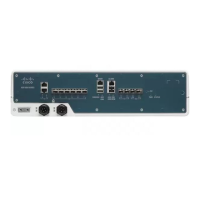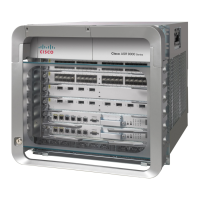Database of Sub-LSP Failure Errors
If any sub-LSP, whether P2MP or P2P, fails to recover after an SSO switchover, the failure is noted in an
error database for troubleshooting. You can use theshow ip rsvp high database lsp command to display the
error database entries.
Figure 2: Network Topology with P2MP TE Tunnel
How P2MP TE Sub-LSPs Are Signaled
RSVP TE extensions defined in RFC 4875 allow multiple sub-LSPs to be signaled from the headend router.
A P2MP TE tunnel consists of multiple sub-LSPs that connect the headend router to various tailend routers.
The headend router sends one RSVP path message to each destination. The tailend router replies with a RESV
message. The Label Forwarding Information Base (LFIB) is populated using the RSVP labels allocated by
the RESV messages.
The P2MP TE feature does not support signaling of multiple sub-LSPs in the same Path/Resv message. If
multiple sub-LSPs occur in the same message, the router sends a PathErr Unknown Objects message, and the
Path/Resv message with multiple sub-LSPs is not forwarded.
The tailend routers allocate unreserved labels, which are greater than 15 and do not include implicit or explicit
null labels. Using unreserved labels allows IP multicast to perform a Reverse Path Forwarding (RPF) check
on the tailend router. Because a sub-LSP tailend router cannot be represented as a regular interface, a special
MPLS Traffic Engineering Path Calculation and Setup Configuration Guide, Cisco IOS XE Release 3S (Cisco ASR
920 Series)
13
MPLS Point-to-Multipoint Traffic Engineering
How P2MP TE Sub-LSPs Are Signaled

